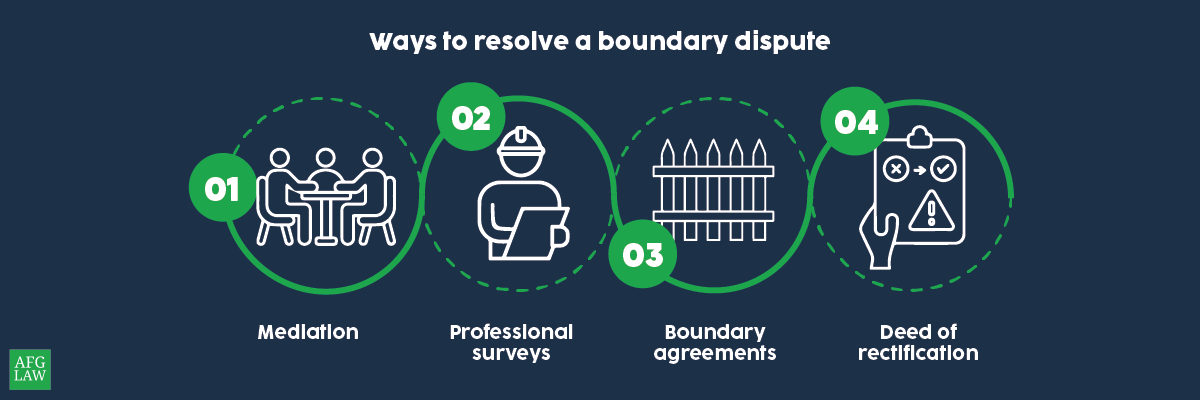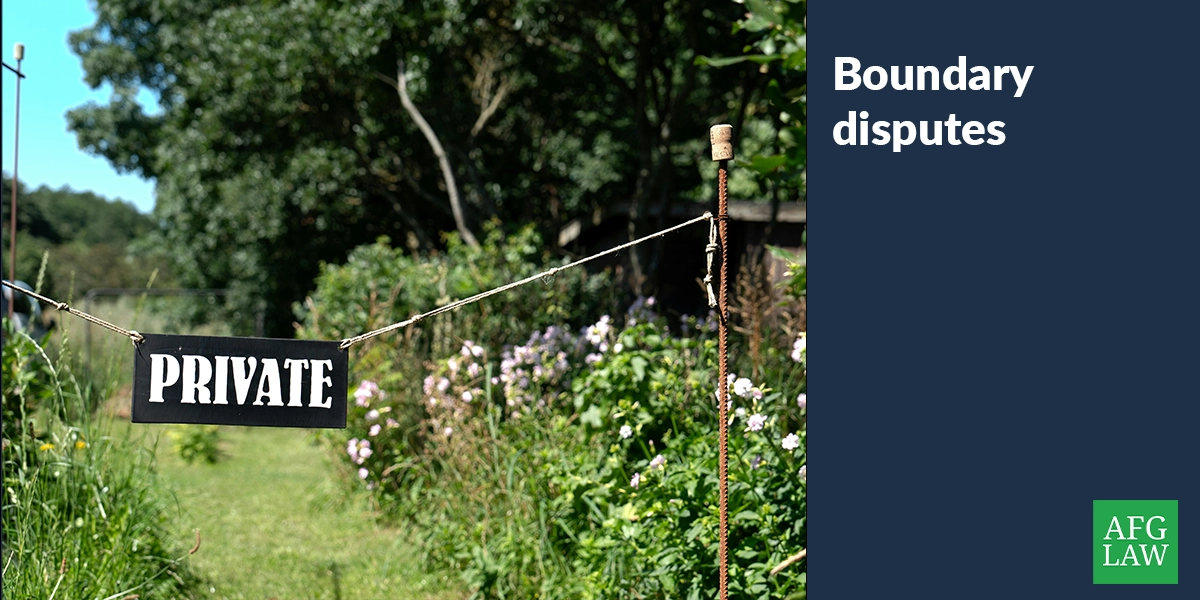Boundary disputes can be extremely distressing for property owners, often leading to strained relationships and expensive legal battles.
These disputes often arise when the exact location of the property boundaries are unclear or disputed between neighbours; but thankfully, there are several options available to resolve such conflicts in an amicable manner.
Do you need a solicitor for a boundary dispute?
Although you might think you can solve a boundary dispute between yourself and the other party involved, it can be a highly complex issue and so we always advise you consult a dispute resolution solicitor.
Boundary disputes can include complicated historical documents and physical markers, meaning it is likely you will need an experienced solicitor to interpret and understand these complexities.
What are boundary disputes?
Boundary disputes are disagreements about the division of land or water between two owners or occupiers of neighbouring properties.
Boundary disputes can be caused for a number of reasons:
Encroachment - This is when someone builds across the boundary lines.
Unclear boundaries - When the exact location of the boundary is disputed.
Trespassing - When someone uses land that they think is theirs, but it isn’t.
Repositioning of pipes and drainage - When pipes and/or drains are made in a new location.
Rights of way - This usually relates to access to a property when one or both parties assumes the land accessing a property is theirs.
Ways to resolve a boundary dispute
Even though boundary disputes can be complex issues, there are a few different ways that they can be resolved.

Mediation
Open communication is the first step in resolving boundary disputes. Creating a space for calm and constructive discussions can help to identify common ground and potential solutions.
If direct communication isn’t working or one party isn’t open to informal discussions, mediation is another option which involves a neutral third party. The aim of meditation is to help to facilitate discussions and guide both parties to find an agreeable solution.
Professional surveys
Hiring a expert surveyor to conduct a comprehensive property survey is usually a critical step when it comes to resolving property disputes.
A surveyor will assess historical documents, physical markers and any other appropriate evidence to accurately determine the exact boundary line. The results of these surveys can help assist in resolving disputes and they can also be used in court as evidence if necessary and if the court allows it.
Boundary agreements
Once it has been established where the boundaries are by a professional survey, the parties can enter into a boundary agreement.
A boundary agreement is a legal document outlining the agreed property lines and any specific terms relating to land use or maintenance. It provides a clear reference point for any future references and can help prevent further disputes.
Deed of rectification
In cases where the boundary dispute arises due to errors in property deeds, you may need a deed of rectification. This is a legal document that corrects any inaccuracies or omissions in the deed, helping to ensure that the property boundaries are reflected properly.
What evidence is needed for a boundary dispute?
When trying to resolve a boundary dispute, there are a number of different types of evidence that may be required.
Evidence for boundary disputes include:
Title Deeds - These include property descriptions, details of past transactions and the original conveyance.
Conveyancer Documentation - This can include old files from solicitors involved in the original purchase of the property.
Surveyors Report - As we’ve mentioned, a surveyor can assess historical documents and other relevant documents to determine boundary lines.
Photographs - This can be used as evidence.
Ordnance Survey Plans - These are detailed maps that can be used as evidence.
Written Statements - These can be signed in front of a dispute resolution solicitor, magistrate or commissioner of oaths
Historical Legal Disputes - Any historical formal and informal agreements related to the property can be used.
Are there time limits on boundary disputes?
In the UK, there is no specific time limit for filing a boundary dispute in court. However, there are time limits for making claims in certain circumstances.
If a neighbour claims ownership of land that belongs to an adjoining property, the true owner may not be able to recover the property after 10-12 years of adverse possession. However, the time limit does depend on where the property is registered.
There is also a 7 year boundary rule which states if a boundary has been in place for over 7 years without a complaint, it is generally accepted as the legal border between properties.
